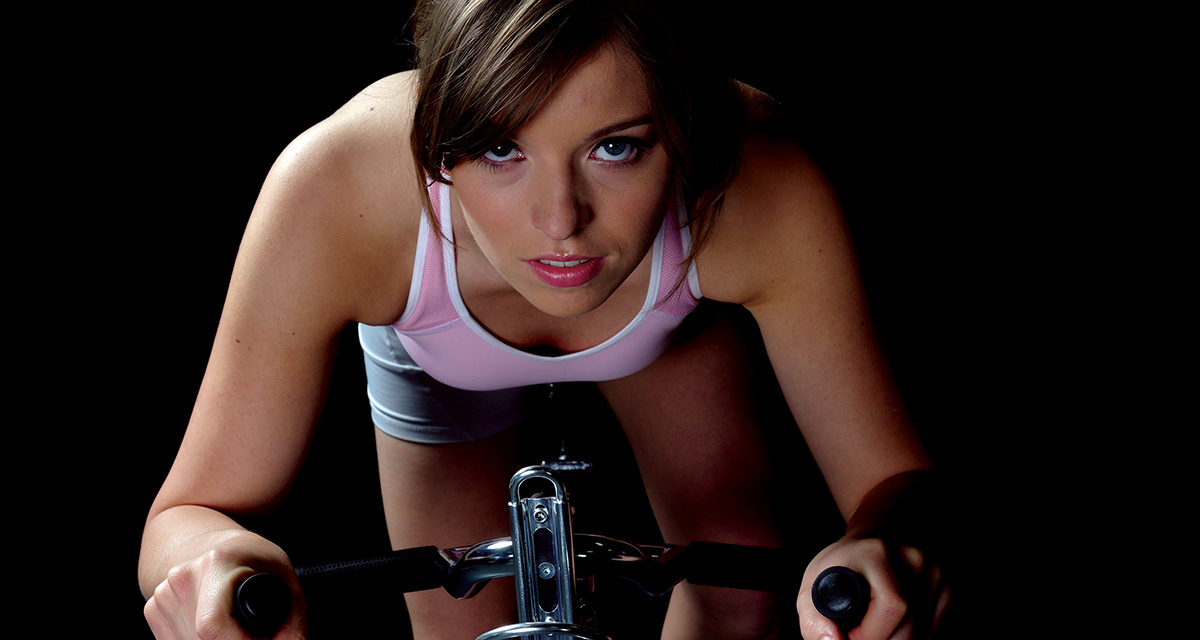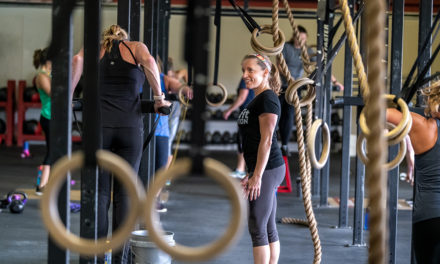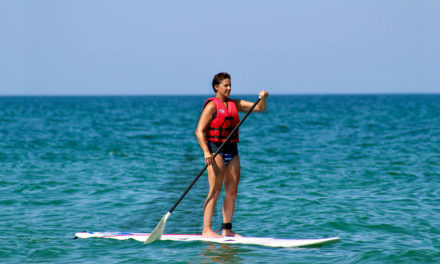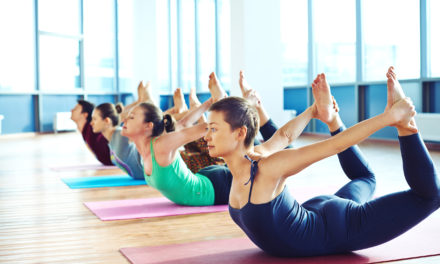High-intensity interval training is hard and scientifically proven to get you hard-earned results.
I clip my shoes into the spin bike and start pedaling, excited and skeptical. It’s my first workout of a new regimen prescribed to me by an exercise physiologist who studies how to fundamentally change the human body—something I’m more intrigued about than ever as I stare down my 40th birthday. It entails a 10-minute warm-up, then 4 minutes of really hard work intermingled with 8 minutes of rest. Do this 20-ish minute workout a couple times a week, I’m told, and I’ll see way better and faster results than my current hour-long spinning and swimming classes. Hence my excitement—and skepticism.
I spend 10 minutes spinning my legs at a moderate pace, and I’m starting to sweat a little when my first 30-second high-intensity interval (HIIT) begins. My mission: Jack up the resistance on my bike as much as I can (and still be able to pedal), and spin as fast as humanly possible. Three seconds before my warm-up ends, I turn the resistance dial a couple times to the right and start biking like I’m trying to flee a swarm of bees.
At 10 seconds into this HIIT, I feel like a boss: strong, exhilarated, and convinced I’ve got this. At 13 seconds in, my legs slow a little and the steely confidence I was filled with mere seconds earlier starts to dissipate. I reach the 20-second mark and I can physically feel my lungs—a slight burning sensation that prompts me to consider abandoning this interval immediately. Yet the fact that there’s just 10 seconds left pushes all of my competitive buttons, and I keep pedaling as hard and as fast as I can, gasping for air (literally) until the timer goes off and I have a minute to rest.
I repeat this seven more times—30 seconds of biking at the highest resistance level I can muster, followed by 1 minute of total rest during which I stop spinning, drink some water, and stare at my stopwatch, dreading my next HIIT interval—and I’m done. Do this three times a week for about a month, and I’ll be on my way to changing my body, says Dr. Trevor Bennion, DHSc, an exercise physiologist in Fort Collins, Colo. “This kind of all-out-sprint interval training will boost your overall cardiovascular fitness, help you drop excess fat, and even prompt you to gain muscle,” he says. “And in the lab, we see statistically significant improvements in just a few weeks.”

This kind of all-out sprint interval training will boost your overall cardiovascular fitness, help you drop excess fat, and even prompt you to gain muscle.
How HIIT Works
It sounds too good to be true: Just 4 minutes of really hard work a few times a week and that extra layer of belly fat that’s been increasingly tough to get rid of will start to melt away? Yes, says Bennion. “Everyone thinks they need to change it up all the time and ‘surprise’ their muscles with different workouts in order to see results, but that’s not what the research shows,” he says. To prove it, he gives me a brief lesson on the science behind why this workout works.
Here’s the scoop: When I crank the resistance on the bike and start spinning my legs like a madwoman, it prompts my nervous system to send a signal to my muscles, telling them to contract in order to produce force against that resistance. And because that resistance is so high, my body has to recruit muscle fibers that it typically doesn’t use. “This actually stimulates a metabolic shift,” says Bennion, “because your body wants to make those muscle fibers easier to recruit the next time you push yourself.” This metabolic shift is at the heart of the kind of physical changes I want to see (read: less fat, more muscle), and it’s also the reason why HIIT training will have major benefits when it comes to my heart health, lung capacity, strength, and more.
This metabolic change in my muscles will not only transform how those muscles work, but also how my body’s fat cells act, adds Bennion. “There are genes in your muscles that allow you to take up fatty acids to be used as a fuel, and sprint-interval training actually changes those genes, making them ‘hungrier’ for fatty acids—which come from stored body fat,” he says. Fat cells are made up of triglycerides, and those triglycerides are broken down to create the free fatty acids that muscles need to work hard. “So what you’re doing during HIIT workouts is basically chipping away at the fat content in your fat cells, which makes those fat cells smaller and smaller.”
While smaller fat cells means less stored body fat, the size of your fat cells also determines how they behave, Bennion tells me. Larger fat cells release a hormone called resistin, which interferes with insulin (a hormone that allows your body to use sugar from carbohydrates in the food that you eat for energy) and ultimately prompts you to store fat. On the flip side, small fat cells release the hormone adiponectin (which essentially does the opposite of resistin, helping to regulate glucose levels and fatty-acid breakdown), keeping your fat cells—and fat tissue—to a minimum.
“What’s so cool is that even someone who is morbidly obese can change the way their fat tissue acts simply by exercising,” says Bennion. “HIIT workouts can make large fat cells start behaving like small ones, even if they’re still large, which can truly impact your health.”
HIIT Cheat Sheet
The specifics of HIIT aren’t as important as the fundamentals. That’s why intensity is key.
You really have to work.
It’s called “high intensity” for a reason. You have to kick up the effort level for short periods of time to make it work for you. In fact, during the bursts of effort, you have to push yourself to the max for anywhere from 20 to 90 seconds, typically.
Get the gains.
When it comes to boosting endurance, increasing metabolism, regulating insulin levels, and losing body fat, working at your maximum capacity makes all the difference.
Equip yourself.
Introducing kettlebells, medicine balls, or dumbbells into the HIIT mix will tone your muscles while spiking your heart rate.
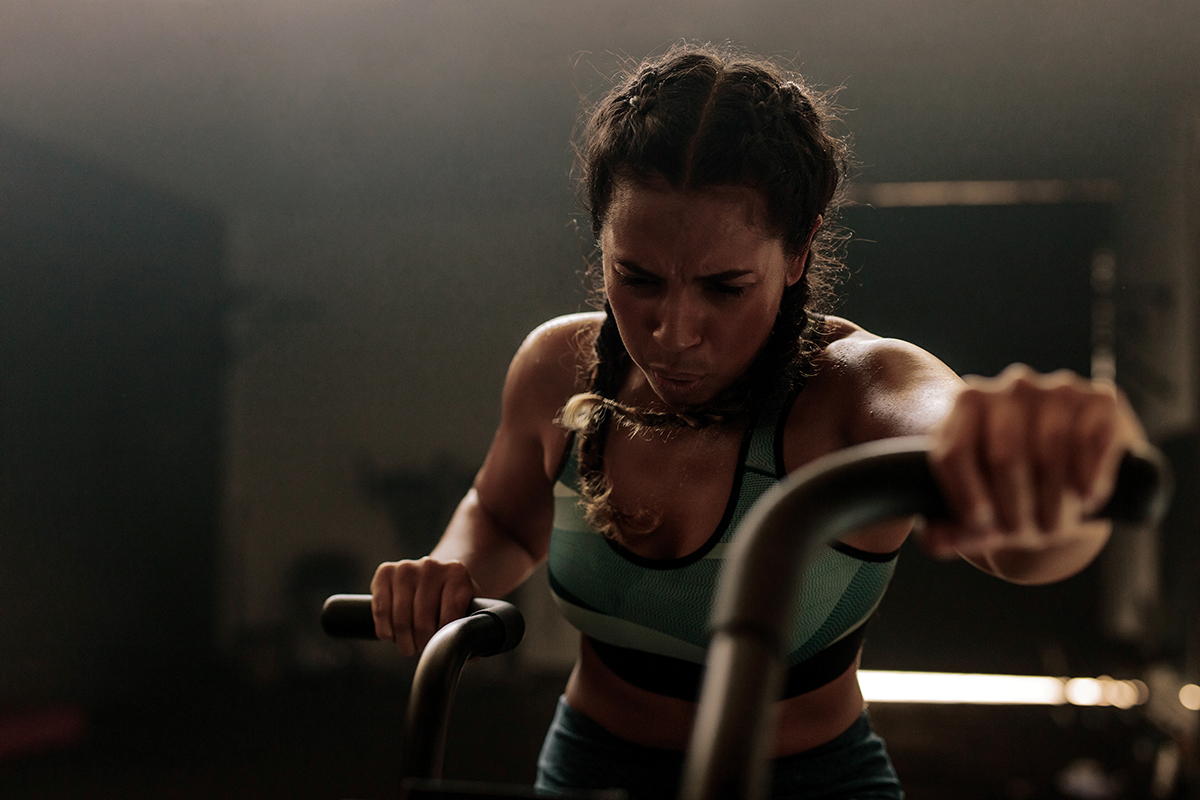
The Verdict
With a big beach vacation on the books with my man, I’m motivated to follow Bennion’s advice to a tee: I prioritize my HIIT workouts and schedule all other exercise around them. When I tell him how much I love hiking (I live in the mountains) and my go-to spinning classes, he says I don’t have to give them up altogether—but I do have to time them so that I’m never too tired to hit it hard during my HIIT sessions.
“If you do the spinning classes or hikes first, you might get burnt out or feel exhausted when it comes time to give it your all on those sprint intervals,” he says. “And remember, those are the ones that’ll recruit those new muscles and make the biggest change. So, prioritize your interval training—then, if you still have energy, fill in the gaps with the other stuff.”
So that’s exactly what I did for 3 weeks. Every Monday, Wednesday, and Friday, I’d head to the spin room at my gym between scheduled classes, blast my favorite music through my iPhone ear buds (Pink’s “What About Us” has been in regular rotation), and hope nobody walked in and saw me riding like my hair was on fire. On my “off” days, I’d do whatever I was in the mood for. Some days that meant taking a master’s swim class; other days that meant getting to the gym with the intention of lifting weights or logging some miles on the treadmill, but instead making a beeline for the sauna and steam room to relax.
And it worked. A week into my new workout regimen, my skinniest skinny jeans started sliding on more easily, keeping me encouraged. Two weeks in, I tried on an old bikini and actually did a little happy dance in front of my bedroom mirror when there seemed to be noticeably less pudge around my midsection. At the end of this 3-week experiment, I boarded a plane to Bali feeling fitter than I had in a long while—despite only doing my three, 20-minute HIIT workouts in the hectic week leading up to my vacation.
I’m officially hooked, committed to hitting my HIIT workouts again when I’m back from Indonesia, and best yet, I’m even starting to look forward to turning 40 fitter than ever.

